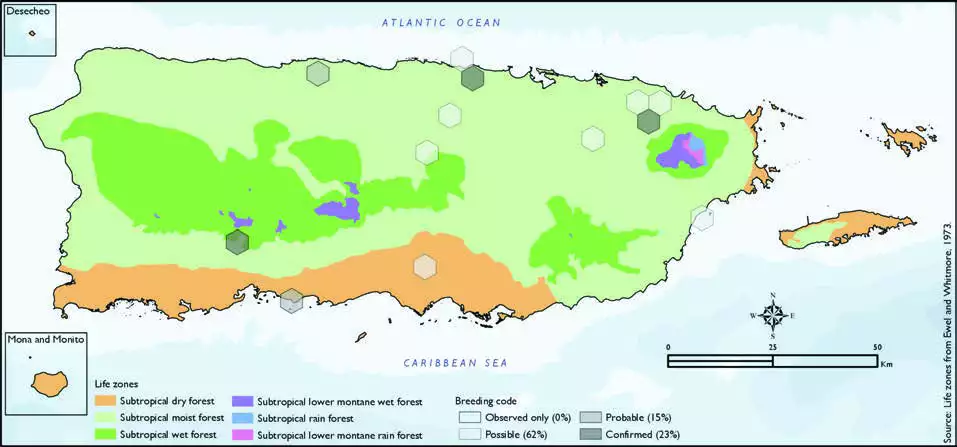Tricolored Munia
Description
The tricoloured munia (Lonchura malacca) is an estrildid finch, native to Bangladesh, India, Sri Lanka, Pakistan, and southern China. The species has also introduced to the Caribbean, in Trinidad, Jamaica, Hispaniola, Puerto Rico, Cuba, and Venezuela. This species, like the chestnut munia has been known as the black-headed munia. Immature birds have pale brown upperparts, lack the dark head found in adults, and have uniform buff underparts that can be confused with immatures of other munias such as the scaly-breasted munia.
Distribution & Habitat
The Tricolored Munia is a species native from India through
southeastern Asia to Taiwan,
Indonesia, and the Philippines
(Raffaele and others 1998). It is
a nonnative species in Puerto
Rico, which occurs around the
entire coast in association with
high grass next to sugarcane
fields, swampy areas, croplands
with seeding grass, and canals
(Raffaele and others 1998, Restall
1997). It was brought to the
island as a cage bird in 1971 and
subsequently became naturalized
(Raffaele and Kepler 1992). The
atlas fieldwork yielded a total of
13 records within 13 hexagons
or 3 percent of the 479 total hexagons (see map). Of the 13
hexagons where this species was
found, breeding met the atlas
definition of confirmed in 23
percent (three) of the hexagons,
probable in 15 percent (two),
and possible in 62 percent
(eight) (see map).Tricolored Munia distribution. The map shows the highest breeding code by hexagon and overlaying the ecological life zones in
Puerto Rico. Note: percentages may not total 100 due to rounding.

Breeding Habits
Previously published reports indicate that the Tricolored
Munia breeds primarily from
June to September (Raffaele and
others 1998). In Puerto Rico, the
nests are bulky structures built
from 1 to 3 m above the ground
in dense sugarcane (Raffaele
1983), but in the municipality
of Humacao it has been found 251Tricolored Munia/Monjita Tricolornesting in clumps of sedges (Cyperus spp.) growing on top of
coconut palm (Cocos nucifera)
stumps (Burger and Gochfeld
1989). Atlas results suggest that
this species breeds mostly from
March to July and to a lesser
extent in January, September,
and October (see chart).
Breeding peaks in May, and
breeding mostly occurs within
the subtropical moist forest life
zone (see chart). Results show that this species breeds mostly in
lowlands within the subtropical
moist forest life zone (85 percent
of the hexagons) (see table
and map).
Conservation
The global population size for the Tricolored Munia has not
been quantified or assessed,
but the species is described as
locally common (Clement 1999). This species is currently listed
as a species of least concern by
the IUCN (BirdLife International
2018). In Puerto Rico, the
Tricolored Munia has a protected
habitat in land of about 6.1
percent or 19 km2 of the total area covered by the hexagons
where evidence of breeding was
found for this species (310 km2).
Related Species
Family:
finch